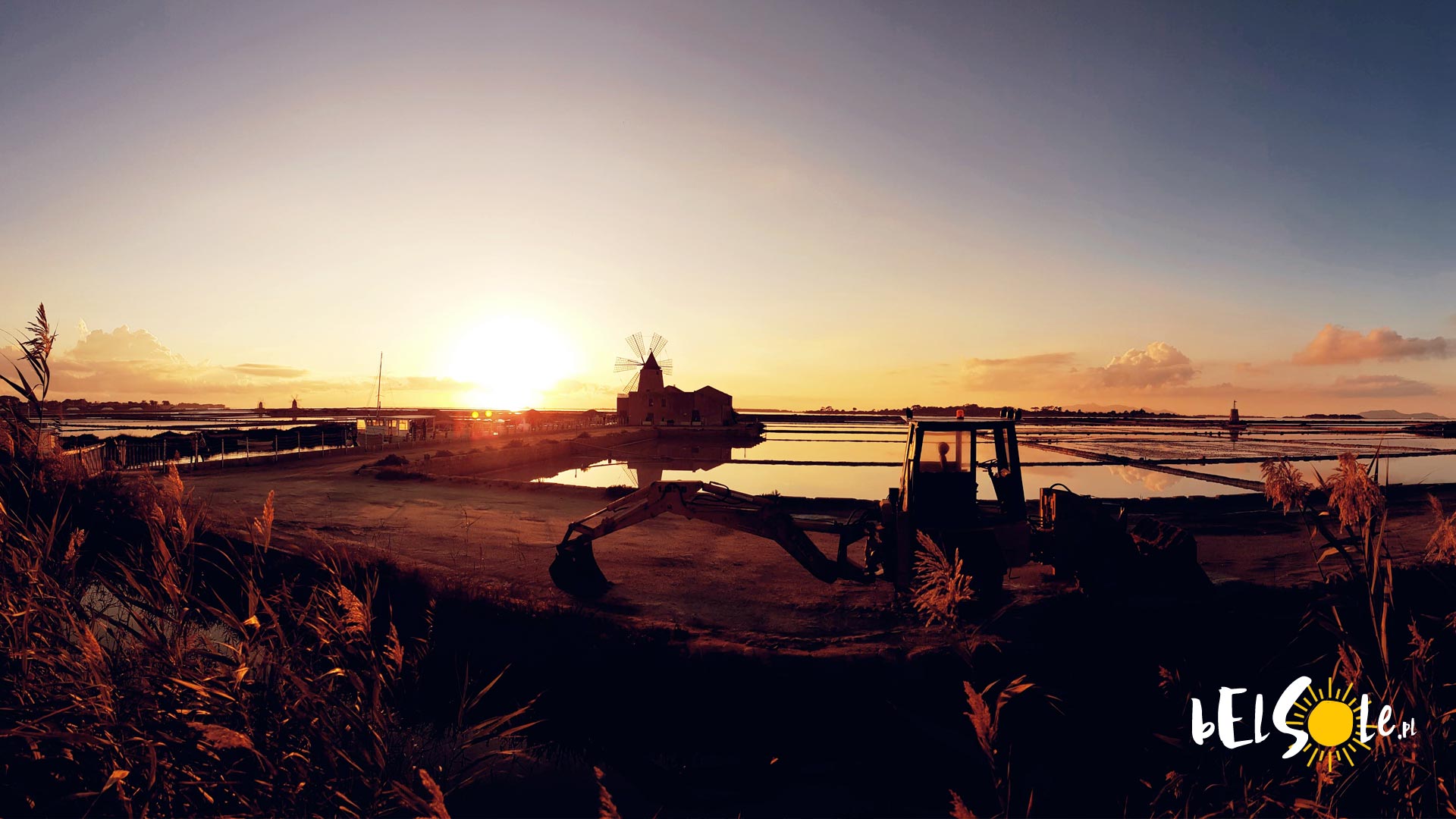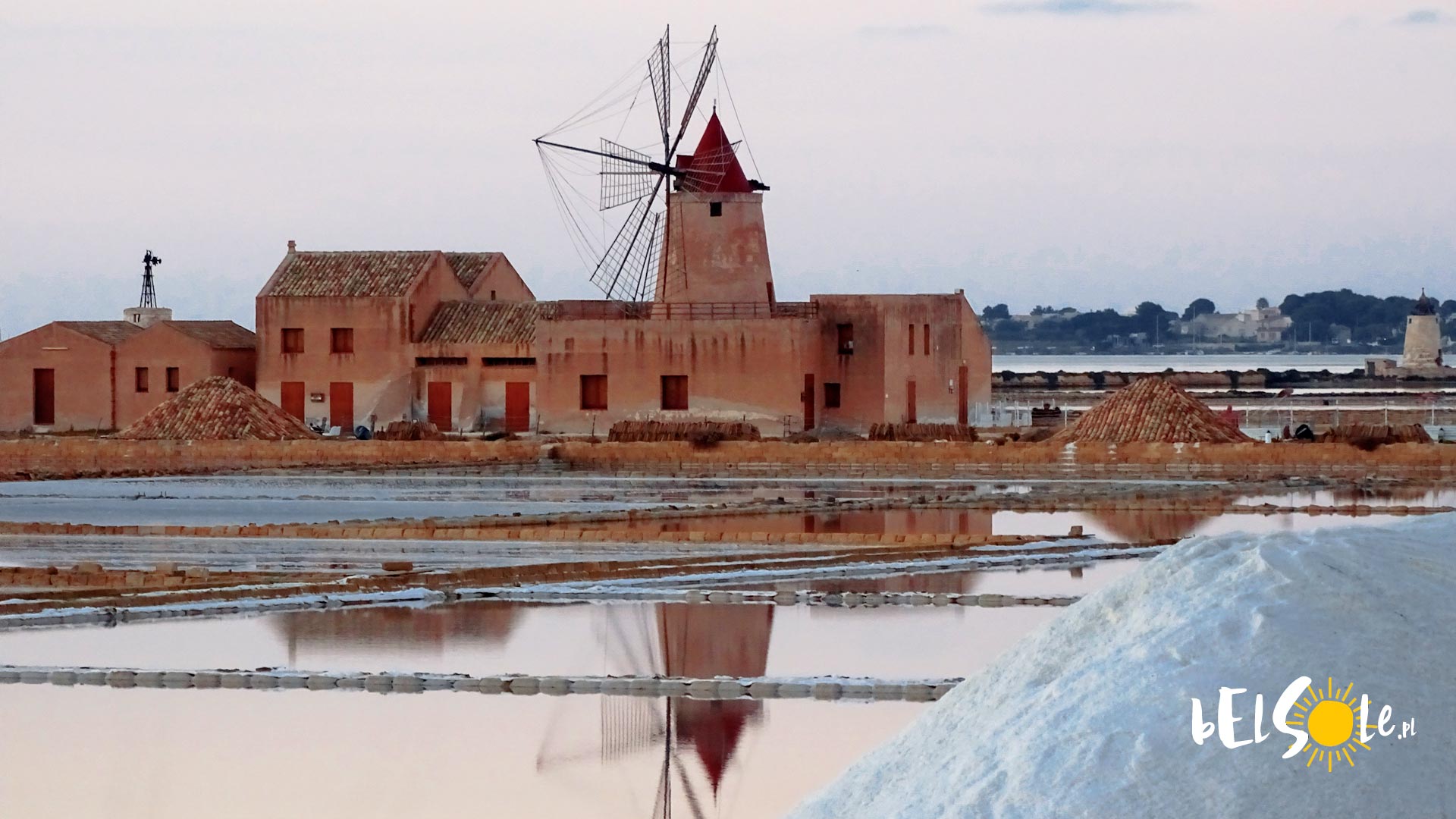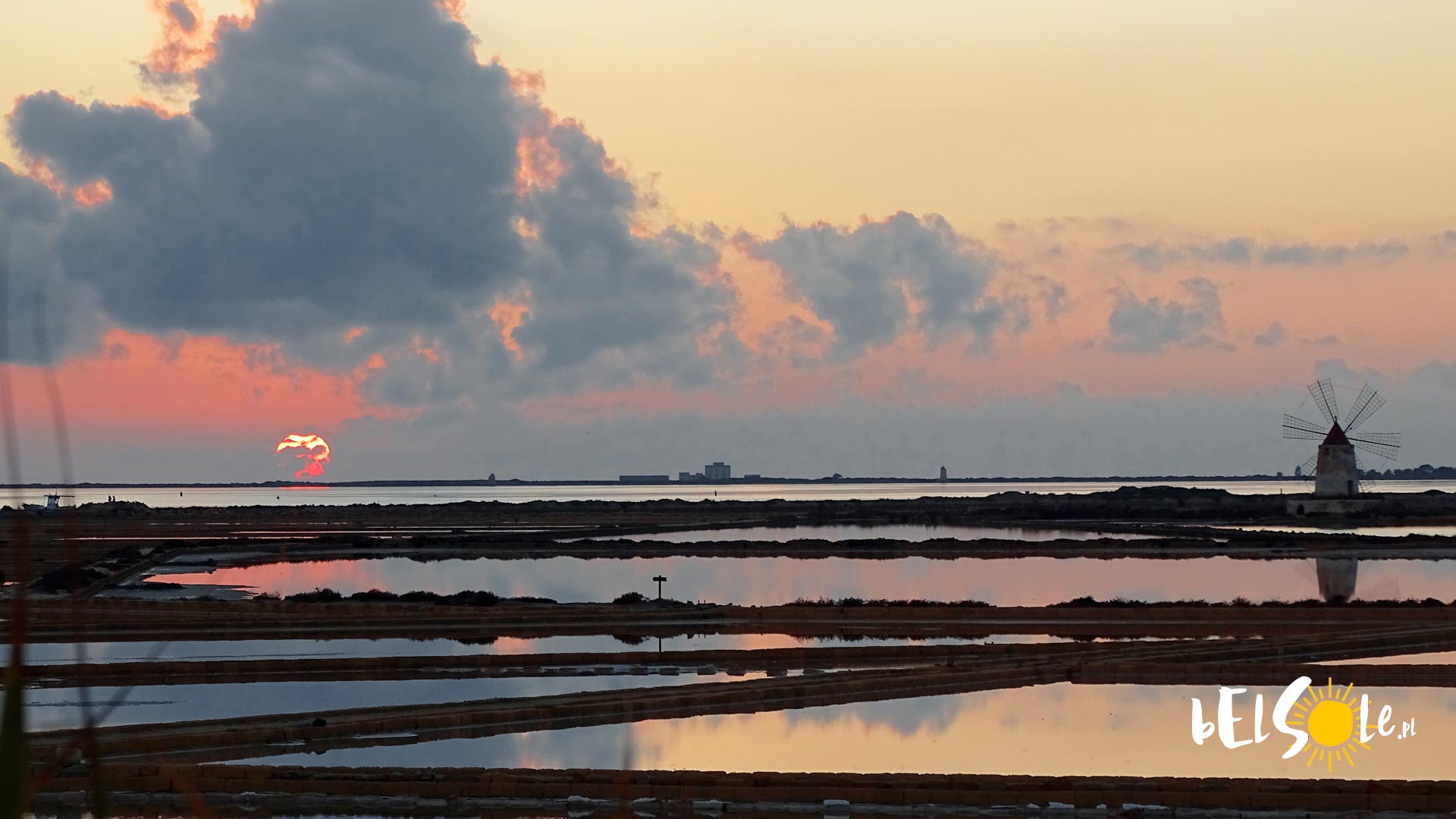For many, the biggest attraction in Sicily is the Etna volcano, but it’s by no means limited to just that. One of the most unique tourist attractions in Sicily are the Trapani salt pans, globally recognizable thanks to their characteristic red-roofed windmills, which tower over the landscape of the Riserva naturale integrale Saline di Trapani e Paceco. Here’s the history behind the salt pans and some useful information regarding visiting that area.
The salt pans, one of the main symbols of the island, are situated between Marsala and Trapani, on the western coast of Sicily. The characteristic red-roofed mills tend to be the main focus of pictures showcasing the salt pans, often appearing in holiday sets. The salt pans lie inside the 1995’ nature reserve, which takes up almost 1000 hectares of space. It was separated into two zones: Zona A di Riserva, with 707 hectares, and Zona B di Pre-Riserva, with 278,75 hectares. Even though, the area was brought under protection, the pans are still used to extract sea salt, in the exact same way as centuries ago.
Trapani salt pans – history
The existence of salt pans in the medieval times is confirmed by the notes from a famous, Arabian cartographer and traveler, who served the Sicilian king Roger II, Al-Idrisi, who lived from 1100 to 1166. In the coming years, the salt pans were becoming a more and more highly regarded source, even with all the changes Sicily was going through at the time.
In March 1861, after the Kingdom of Italy came to be, the salt pans were still not nationalised, and the production just kept growing. The first occurence of a downfall for the salt pans took place when the automated salt production started growing very rapidly in Cagliari, Sardinia. Another reason for the downfall were the World Wars, as most of the salt ponds got abandoned at that time. In 1995, the entire area was brought under protection, administered by the WWF Italy. The salt ponds were revitalised and the salt production started anew, on an even bigger scale this time. In April 2011, salt from Trapani (Sale marino di Trapani) became a IGP protected product.
Trapani salt – an exceptional Sicilian product
The sea salt from Trapani is certainly a product that could find itself a spot on the must-buy-in-Sicily list. The african-esque climate serves the salt production incredibly well, and so does the long summer. The windmills, used to pump the water between the ponds and for salt grinding, have become a stable part of the landscape. After the unification of Italy, the Trapani sea water became a very popular export good, shipping as far as to Norway, and the production was reaching up to 100 thousand tons yearly. Nowadays, private companies extract around 50-80 thousand tons per year.
The salt is extracted through traditional methods. The process can take up to 7 months. The salt is collected in the summer, from July to September. It’s collected from: Salina grande, Galia Teresina, Culcasi, Calcara and Galia salt flats.
First, the water from the Mediterranean Sea enters the pond nearest to the seaside, then every few days, it’s pumped to the next ponds, further inland. When the water evaporates fully, leaving only the salt, it’s then collected through tough, physical work.
The Trapani salt pans are not just an interesting ethnographic phenomenon and a place of incredible views. The place, just like the Pink Lake of Torrevieja in Spain, is also fascinating in terms of its flora and fauna.
Trapani salt pans – flora and fauna
The high salt levels in the water allow the more rare species to function in the area. In Trapani, the edges of the salt pans are inhabited by glassworts, the herbaceous seepweed, salsola, arthrocnemum, halopeplis, eugenia, halocnemum and atriplex. We can also spot the charming yellow flowers – calendula maritima and limbarda crithmoides. Another characteristic plant, that we can see is the cynomorium.
For tourists, the local birds may be a lot more interesting, which take the salt pans as their stop during their journey to Africa. There were over 200 different bird types reported around the Trapani salt pans. For most of us, the flamingos are the most exciting. We can also list various types of herons, Ross’ gull, western marsh harriers, pied avocets, common spoonbills, stilts or terns. In the most salty waters of the salt flats, there are also the Artemia salina shrimps, which are one of the elements which go into making the water pink.
Trapani salt pans – salt museum, viewing, pricing
Not all the red-roofed windmills around the salt pans are used for salt extraction. One of them serves as a private salt museum – Museo de Sale – in Nubia. There, you can admire the insides of an antique windmill and learn about the salt production in the region. In fact, you can even see the salt production process for yourself and take a stroll around the salt ponds. The museum’s open from Monday to Saturday, from 9:30 to 19:00. The ticket costs 3 EUR. You can also find a guided tour in these parts – a three hour journey, which will set you back 25 EUR.
Naturally, you don’t have to visit the salt museum to be able to admire the incredible sight of the Trapani salt pans. Observing the sunsets and sunrises is also quite popular at the salt flats. You don’t even have to pay to see the sun rise and fall.











